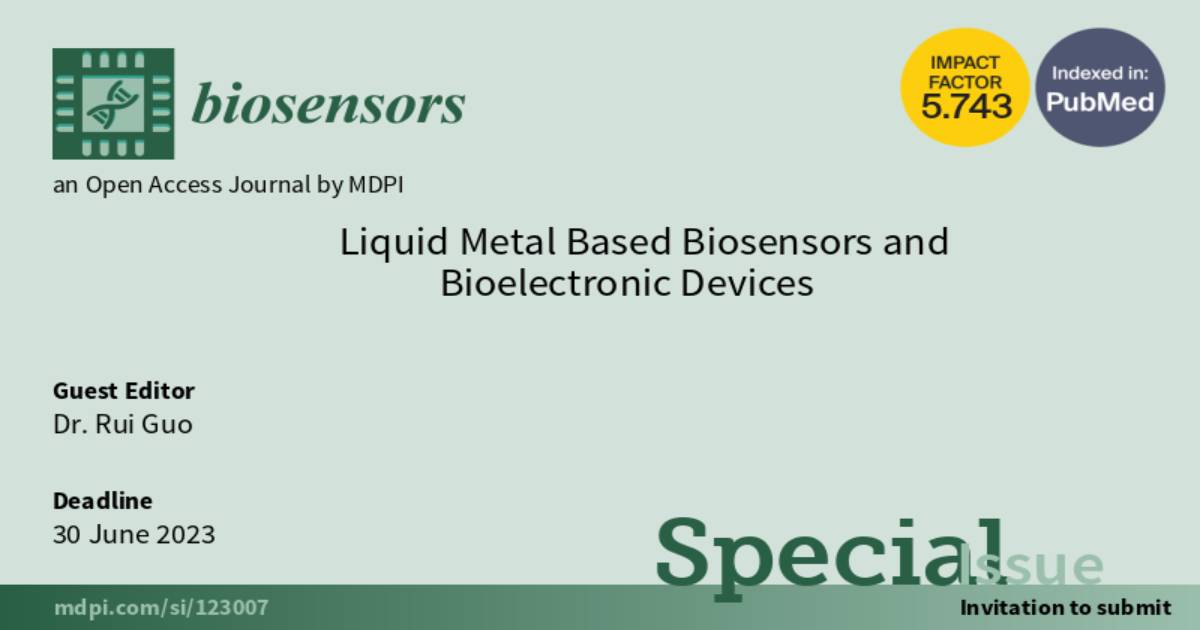Liquid Metal Based Biosensors and Bioelectronic Devices
A special issue of Biosensors (ISSN 2079-6374). This special issue belongs to the section "Biosensor and Bioelectronic Devices".
Deadline for manuscript submissions: closed (30 June 2023) | Viewed by 10955

Special Issue Editor
Special Issue Information
Dear Colleagues,
We invite the submission of research articles and reviews to a Special Issue of the open access journal Biosensors (Q1 in the categories of Analytical Chemistry and Instruments & Instrumentation). Your recent discoveries and improvements to biosensors in the topics of liquid-metal-based biosensors and bioelectronic devices are welcome. This Special Issue of Biosensors provides the most recent progress and unique advantages in these areas.
With high fluidity and metallic conductivity, room-temperature liquid metals have been widely used in flexible electronics, biosensors, wearable devices, and thermal energy management. Many liquid-metal-based conductive materials and circuit printing methods have also been developed for the manufacture of flexible biosensors. Therefore, this issue welcomes contributions about liquid-metal-based biosensors and bioelectronic devices, such as blood glucose sensors, strain sensors, and flexible electrodes. Furthermore, studies of wearable devices printed on clothes or based on conductive fibers, conformal biosensors, and new liquid metal circuit printing methods based on 3D printing, screen printing, and transfer printing are welcome.
Dr. Rui Guo
Guest Editor
Manuscript Submission Information
Manuscripts should be submitted online at www.mdpi.com by registering and logging in to this website. Once you are registered, click here to go to the submission form. Manuscripts can be submitted until the deadline. All submissions that pass pre-check are peer-reviewed. Accepted papers will be published continuously in the journal (as soon as accepted) and will be listed together on the special issue website. Research articles, review articles as well as short communications are invited. For planned papers, a title and short abstract (about 100 words) can be sent to the Editorial Office for announcement on this website.
Submitted manuscripts should not have been published previously, nor be under consideration for publication elsewhere (except conference proceedings papers). All manuscripts are thoroughly refereed through a single-blind peer-review process. A guide for authors and other relevant information for submission of manuscripts is available on the Instructions for Authors page. Biosensors is an international peer-reviewed open access monthly journal published by MDPI.
Please visit the Instructions for Authors page before submitting a manuscript. The Article Processing Charge (APC) for publication in this open access journal is 2700 CHF (Swiss Francs). Submitted papers should be well formatted and use good English. Authors may use MDPI's English editing service prior to publication or during author revisions.
Keywords
- liquid metal
- flexible biosensors
- wearable devices
- conformal biosensors
- liquid metal circuit printing method
- flexible electrodes






